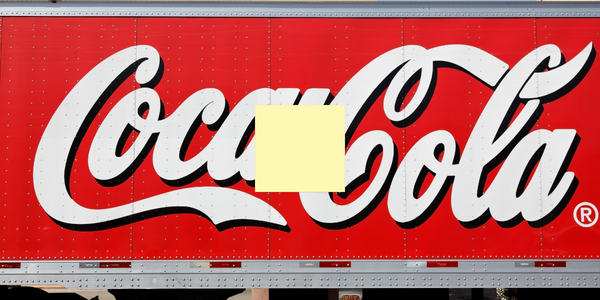Download PDF
foodpanda: Democratizing Data with Sisense for Strategic Business Analysis
Technology Category
- Analytics & Modeling - Big Data Analytics
- Analytics & Modeling - Predictive Analytics
- Application Infrastructure & Middleware - Data Visualization
Applicable Industries
- E-Commerce
- Food & Beverage
Applicable Functions
- Business Operation
- Sales & Marketing
Services
- System Integration
- Training
The Challenge
foodpanda faced significant challenges with their existing data warehouse, which was unable to efficiently handle terabytes of complex data from multiple sources. The limitations included a lack of data mining functions and the inability to affordably process large volumes of data. Additionally, foodpanda aimed to centralize data to promote transparency and democratization, reducing employee reliance on the BI department. They needed an intuitive, self-service BI solution to shift the focus from data collection to insights and strategy.
About The Customer
foodpanda, founded in 2012, is a market leader in global online food delivery, particularly in emerging markets. The company has experienced rapid growth, raising $300M in recent funding rounds. Operating in over 500 cities across five continents, foodpanda has partnered with more than 38,000 restaurants globally. The company employs over 3,700 people worldwide and is headquartered in Berlin, Germany. foodpanda's primary data sources include a data warehouse running on PostgreSQL servers, with data from Salesforce, SQL, Google Docs, Google BigQuery, Zendesk, and Jenkins drop scheduling.
The Solution
foodpanda implemented Sisense to address their data challenges. Sisense's Single-Stack™ solution allowed foodpanda to rely on one system for data preparation, querying, and visualization. The In-Chip technology enabled agile and affordable analysis of big data. Sisense's self-service platform democratized data access, transforming employees into active business analysts. The platform's versatile security features allowed for customizable user permissions and easy segmentation of dashboards. Sisense's unparalleled customer care and support further facilitated the implementation process.
Operational Impact
Quantitative Benefit
Related Case Studies.

Case Study
The Kellogg Company
Kellogg keeps a close eye on its trade spend, analyzing large volumes of data and running complex simulations to predict which promotional activities will be the most effective. Kellogg needed to decrease the trade spend but its traditional relational database on premises could not keep up with the pace of demand.

Case Study
HEINEKEN Uses the Cloud to Reach 10.5 Million Consumers
For 2012 campaign, the Bond promotion, it planned to launch the campaign at the same time everywhere on the planet. That created unprecedented challenges for HEINEKEN—nowhere more so than in its technology operation. The primary digital content for the campaign was a 100-megabyte movie that had to play flawlessly for millions of viewers worldwide. After all, Bond never fails. No one was going to tolerate a technology failure that might bruise his brand.Previously, HEINEKEN had supported digital media at its outsourced datacenter. But that datacenter lacked the computing resources HEINEKEN needed, and building them—especially to support peak traffic that would total millions of simultaneous hits—would have been both time-consuming and expensive. Nor would it have provided the geographic reach that HEINEKEN needed to minimize latency worldwide.

Case Study
Energy Management System at Sugar Industry
The company wanted to use the information from the system to claim under the renewable energy certificate scheme. The benefit to the company under the renewable energy certificates is Rs 75 million a year. To enable the above, an end-to-end solution for load monitoring, consumption monitoring, online data monitoring, automatic meter data acquisition which can be exported to SAP and other applications is required.

Case Study
Coca Cola Swaziland Conco Case Study
Coco Cola Swaziland, South Africa would like to find a solution that would enable the following results: - Reduce energy consumption by 20% in one year. - Formulate a series of strategic initiatives that would enlist the commitment of corporate management and create employee awareness while helping meet departmental targets and investing in tools that assist with energy management. - Formulate a series of tactical initiatives that would optimize energy usage on the shop floor. These would include charging forklifts and running cold rooms only during off-peak periods, running the dust extractors only during working hours and basing lights and air-conditioning on someone’s presence. - Increase visibility into the factory and other processes. - Enable limited, non-intrusive control functions for certain processes.

Case Study
Temperature Monitoring for Restaurant Food Storage
When it came to implementing a solution, Mr. Nesbitt had an idea of what functionality that he wanted. Although not mandated by Health Canada, Mr. Nesbitt wanted to ensure quality control issues met the highest possible standards as part of his commitment to top-of-class food services. This wish list included an easy-to use temperature-monitoring system that could provide a visible display of the temperatures of all of his refrigerators and freezers, including historical information so that he could review the performance of his equipment. It also had to provide alert notification (but email alerts and SMS text message alerts) to alert key staff in the event that a cooling system was exceeding pre-set warning limits.

Case Study
Coca-Cola Refreshments, U.S.
Coca-Cola Refreshments owns and manages Coca-Cola branded refrigerators in retail establishments. Legacy systems were used to locate equipment information by logging onto multiple servers which took up to 8 hours to update information on 30-40 units. The company had no overall visibility into equipment status or maintenance history.





